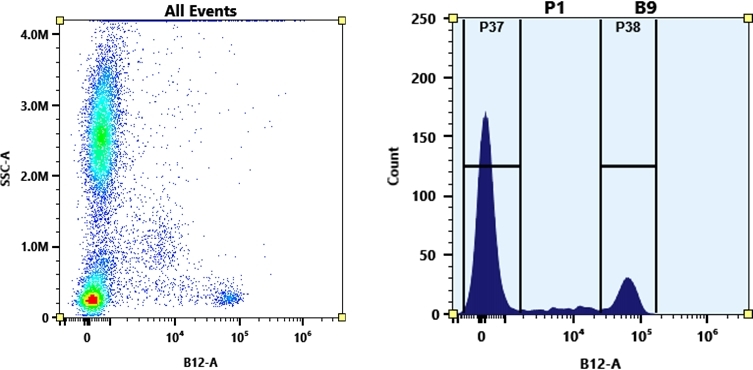iFluor® 720 succinimidyl ester
AAT Bioquest's iFluor® dyes are optimized for labeling proteins, particularly antibodies. These dyes are bright, photostable, and have minimal quenching on proteins. They can be well excited by the major laser lines of fluorescence instruments (e.g., 350, 405, 488, 555, and 633 nm). iFluor® 720 dyes have fluorescence excitation and emission maxima of ~716 nm and ~740 nm respectively. These spectral characteristics make them a unique color for fluorescence imaging and flow cytometry applications. iFluor® 720 is an excellent acceptor dye for preparing tandem colors with APC and PE. These iFluor® 720 tandem colors offer a set of unique color profiles for spectral flow cytometry. Compared to Alexa Fluor® 700 tandems, iFluor® 720 tandems have improved photostability.


| Catalog | Size | Price | Quantity |
|---|---|---|---|
| 1046 | 1 mg | Price |
Physical properties
| Molecular weight | 1089.29 |
| Solvent | DMSO |
Spectral properties
| Absorbance (nm) | 714 |
| Correction factor (260 nm) | 0.15 |
| Correction factor (280 nm) | 0.13 |
| Extinction coefficient (cm -1 M -1) | 240000 1 |
| Excitation (nm) | 716 |
| Emission (nm) | 740 |
| Quantum yield | 0.14 1 |
Storage, safety and handling
| H-phrase | H303, H313, H333 |
| Hazard symbol | XN |
| Intended use | Research Use Only (RUO) |
| R-phrase | R20, R21, R22 |
| Storage | Freeze (< -15 °C); Minimize light exposure |
| UNSPSC | 12171501 |
Documents
Contact us
| Telephone | |
| Fax | |
| sales@aatbio.com | |
| International | See distributors |
| Bulk request | Inquire |
| Custom size | Inquire |
| Technical Support | Contact us |
| Request quotation | Request |
| Purchase order | Send to sales@aatbio.com |
| Shipping | Standard overnight for United States, inquire for international |
Page updated on December 15, 2025

